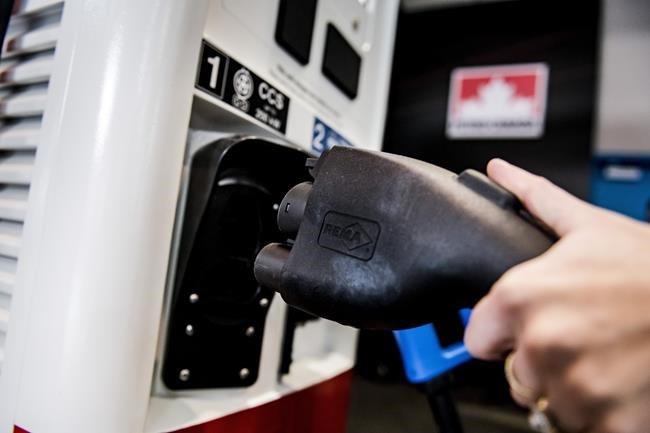CALGARY — Ottawa is set to pour an "unprecedented" amount of public money into the mining and metals sector as growing global demand for electric vehicles creates what industry insiders say is a once-in-a-generation opportunity for Canadian resources.
In last week's federal budget, Justin Trudeau's Liberals committed to providing up to $3.8 billion over eight years to create what the government calls Canada’s first critical minerals strategy.
The aim is to increase extraction and production of Canadian nickel, lithium, cobalt, copper, titanium, zinc and other minerals that are used as components in electric vehicles and their batteries. The ultimate goal is to create a domestic supply chain for electric vehicles, and in doing so, boost the economy while tackling greenhouse gas emissions at the same time.
"It’s setting the table for Canada to create its own industry and not rely on others nearly so much," said Pierre Gratton, president and chief executive of the Mining Association of Canada.
While Canada already mines many of the minerals targeted for investment (this country is the sixth largest global producer of nickel, for example) and has significant repositories of others, the volumes that are currently produced are not going to be enough to keep up with the coming energy transition and the electrification of transportation systems, Gratton said.
He pointed to recent announcements by General Motors that it will build Canada's first all-electric vehicle assembly plant in Ingersoll, Ont. as well as a cathode manufacturing facility in Quebec as examples.
“They can only succeed if they have a secure supply of mined materials," Gratton said. “And in the last 20 years, the amount of base metal or critical mineral exploration in Canada has been very low."
Mineral production for many of these substances is highly concentrated. More than three-quarters of global output in lithium, cobalt and rare earth elements come from three countries, the International Energy Agency reports, and China has "a strong presence across the board" when it comes to processing critical minerals.
Brian Kingston, president and chief executive of the Canadian Vehicle Manufacturers' Association, said the government is going to need to invest in the entire vehicle supply chain if it wants to meet its stated target of having 60 per cent of all light vehicles sold in Canada be electric by 2030, and 100 per cent by 2036.
“We’re seeing automakers make a significant investment into electrification ... but with that comes demand for critical minerals," Kingston said. He pointed to the IEA's Net Zero by 2050 report, which projects more than six times the current amount of mineral inputs will be needed in the next three decades.
One of the most important planks of the government's new strategy is a new 30 per cent tax credit, set up as a flow-through share arrangement, for exploration expenses for certain targeted minerals.
That will be an important incentive, said Chris Doornbas, president and chief executive of E3 Metals Corp., a Calgary-based junior resource company that holds the rights to one of Canada's largest lithium resources, located within the Leduc Reservoir, a historic oil and gas-producing region of Alberta.
"What the industry needs all over is investment," Doornbas said. "It is getting a bit easier now, but two or three years ago it was really difficult finding equity capital to fund the business."
The publicly traded E3 Metals has developed technology to extract the lithium that occurs naturally within oilfield brines, and is in the process of developing a field pilot project before moving onto the commercialization stage.
While the federal budget also contains consumer incentives to grow electric vehicle adoption in the form of a tax credit, Doornbas said the most important government stimulus needs to happen at the other end of the chain.
"We won't have the vehicles without the critical minerals," he said. "We need to approach it from the bottom up, right now."
In addition to investing in exploration, the Liberal government is also committing $1.5 billion for new critical minerals projects in the areas of processing, materials manufacturing and recycling, as well as $144 million for research to support the responsible extraction and processing of critical minerals.
That's critical, said Amanda Hall, a geophysicist and founder of Calgary-based Summit Nanotech, which has developed a proprietary lithium extraction technology that the company says uses less water and chemicals and produces fewer emissions than traditional extraction methods.
“It’s really important for us to do this well, and not just throw government money at it willy-nilly," Hall said. "We need to make sure we’re doing this sustainably, we’re using the best technologies, and building out infrastructure the right way.”
But there is no time to waste, Hall added, because the explosion in demand for batteries and other EV components is happening now.
"I was in the House of Commons recently speaking to them ... about Canada’s position in the lithium ion supply chain and how beholden we are to China right now," she said.
"Government support is crucial for (industry) right now, because we really don't want to miss this boat."
This report by The Canadian Press was first published April 11, 2022.
Amanda Stephenson, The Canadian Press



